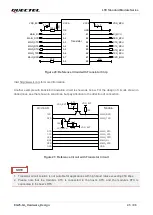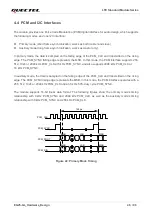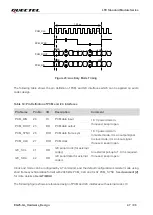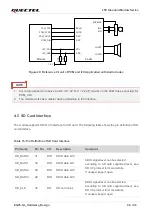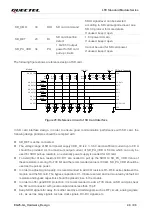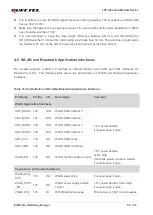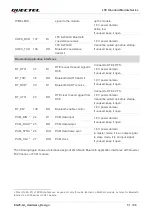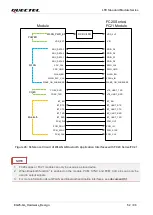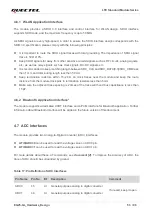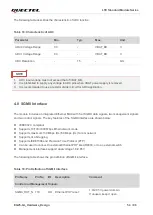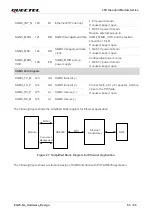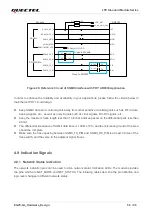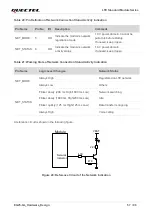
LTE Standard Module Series
EG25-GL_Hardware_Design 42 / 96
be connected to PCB ground directly.
⚫
To avoid cross-talk between USIM_DATA and USIM_CLK, keep them away from each other and
shield them with surrounded ground.
⚫
In order to offer good ESD protection, it is recommended to add a TVS array whose parasitic
capacitance should not be more than 15 pF. The 0
Ω resistors should be added in series between the
module and the (U)SIM card to facilitate debugging. The 33 pF capacitors are used for filtering
interference of EGSM900. Please note that the (U)SIM peripheral circuit should be close to the
(U)SIM card connector.
⚫
The pull-up resistor on USIM_DATA trace can improve anti-jamming capability when long layout trace
and sensitive occasion are applied, and should be placed close to the (U)SIM card connector.
4.2 USB Interface
The module contains one integrated Universal Serial Bus (USB) interface which complies with the USB
2.0 specification and supports high-speed (480 Mbps) and full-speed (12 Mbps) modes. The USB
interface can only serve as the slave device.
USB interface is used for AT command communication, data transmission, GNSS NMEA sentence output,
software debugging, firmware upgrade and voice over USB.
The following table shows the pin definition of USB interface.
Table 11: Pin Definition of USB Interface
For more details about the USB 2.0 specifications, visit http://www.usb.org/home.
The USB interface is recommended to be reserved for firmware upgrade in your design. The following
figure shows a reference circuit of USB interface.
Pin Name
Pin No.
I/O
Description
Comment
USB_DP
69
AIO
USB 2.0 differential data (+) USB 2.0 compliant.
Require differential impedance of 90
Ω.
If unused, keep it open.
USB_DM
70
AIO
USB 2.0 differential data (-)
USB_VBUS
71
PI
USB connection
Typical 5.0 V
GND
72
-
Ground


















